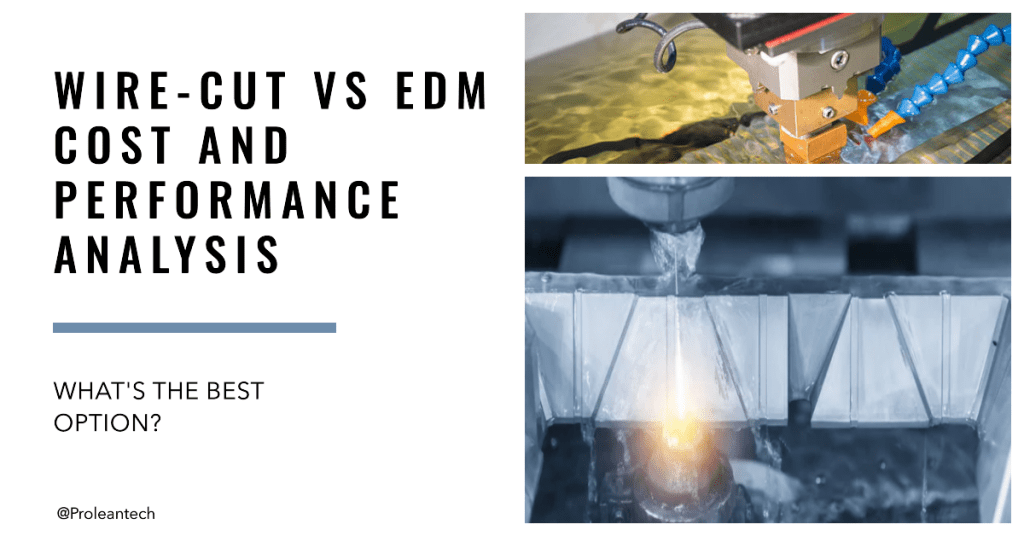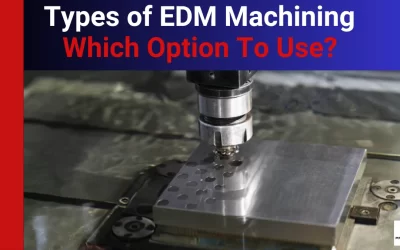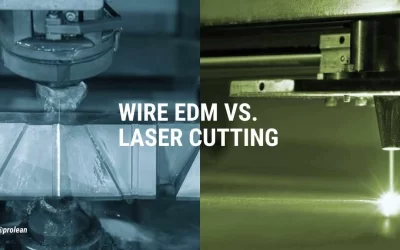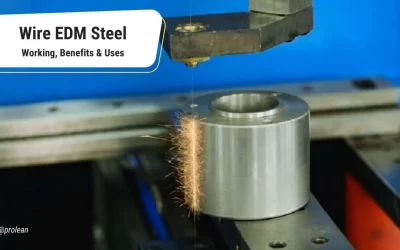
The world of manufacturing and engineering is constantly evolving with the introduction of new technologies and processes. Among these innovations are wire cut services and EDM (Electrical Discharge Machining) technologies. Both techniques have gained prominence in the industry due to their ability to create intricate and complex shapes with high precision. However, there has always been a debate surrounding the comparison of wire cuts and EDM in terms of cost and performance.
This article aims to provide a comprehensive analysis of these two technologies, highlighting their advantages and disadvantages, and aiding manufacturers in making informed decisions.
Wire Cut Process

Wire-cut machined part
The wire cut process, also known as wire cutting or wire EDM, involves the use of a thin, electrically charged wire to cut through conductive materials, such as metal or graphite. This is achieved by creating a spark between the wire and the material, generating sufficient heat to melt and vaporize a small portion. As the wire moves through the workpiece, the removed material forms a kerf, and the process continues along a programmed path.
The wire-cut process offers several benefits, including the ability to cut intricate and complex shapes with high accuracy. Additionally, it is a non-contact process, which means that there is no direct contact between the cutting tool and the workpiece. This reduces the risk of mechanical stresses and damage to the material. Moreover, wire-cut technology is capable of cutting tough materials, such as tungsten carbide, which would be difficult to machine using conventional methods.
EDM Process
EDM, or Electrical Discharge Machining, is a manufacturing process that utilizes electrical discharges to remove material from a workpiece. It involves two electrodes – the tool electrode and the workpiece electrode – being submerged in a dielectric fluid. A voltage is applied between the two electrodes, causing a spark to jump across the gap and erode the material.
The EDM process is suitable for machining conductive materials and offers several advantages, such as high precision and excellent surface finishes. It is also capable of machining complex shapes that are difficult to produce using traditional methods. Furthermore, EDM is a non-contact process, which eliminates mechanical stresses and potential damage to the workpiece. However, it should be noted that the EDM process can be slower and more expensive than other machining methods, depending on the material and complexity of the part.
Related to:
- Electrical Discharge Machining: An Essential Beginner’s Guide
- Unlocking the Potential: Materials Suitable for EDM Process
Wire Cut VS EDM: Cost Analysis
When comparing wire cut and EDM technology, the cost is an important factor to consider. The cost of a wire cut machine is generally lower than that of an EDM machine, making it a more affordable option for manufacturers. However, it is essential to consider the overall cost of ownership, including factors such as consumables, maintenance, and energy consumption.
In terms of consumables, wire-cut machines require a continuous supply of wire, which can be costly, especially for large production runs. On the other hand, EDM machines use graphite or metallic electrodes, which may have a longer lifespan. However, these electrodes can also be expensive, and their cost must be factored into the overall analysis.
Maintenance costs for both wire cut and EDM machines can be relatively high, due to the complexity of the systems and the need for regular servicing. Energy consumption is another factor to consider, as both processes require significant electrical power to operate. However, wire-cut machines generally consume less energy than EDM machines, which can result in lower operating costs over time.
Wire Cut VS EDM: Performance Analysis
Performance is another critical factor when comparing wire cut and EDM technologies. Both processes are known for their precision and ability to create complex shapes. However, there are some differences in their capabilities that may impact the decision-making process.
Wire-cut machines are capable of producing intricate and delicate features with high accuracy, making them ideal for applications such as aerospace components and medical devices. Additionally, the non-contact nature of the wire cut process results in minimal distortion and damage to the workpiece, ensuring a high-quality finish.
EDM machines also offer high precision and excellent surface finishes but may be better suited for machining larger, more robust parts. EDM is also capable of producing deep cavities and undercuts, which can be challenging to achieve with wire-cut technology. However, the EDM process can be slower, particularly when working with hard materials, which may impact production timelines.
Try Prolean Now!
Advantages of Wire Cut over EDM
There are several advantages to using wire cut technology over EDM, including:
- Lower machine costs: Wire-cut machines are generally more affordable than EDM machines.
- Faster cutting speeds: Wire-cut machines can cut through materials more quickly than EDM machines, particularly when working with softer materials.
- Lower energy consumption: Wire-cut machines typically consume less energy than EDM machines, which can result in lower operating costs.
- Greater precision: Wire-cut technology is capable of producing intricate and delicate features with high accuracy.
Advantages of EDM over Wire Cut
There are also several advantages of EDM over wire cuts, such as:
- Versatility: EDM machines can accommodate various materials and applications, making them a more versatile option for EDM manufacturers.
- Capability to produce deep cavities and undercuts: EDM is better suited for producing deep cavities and undercuts, which can be challenging with wire cut technology.
- Excellent surface finishes: EDM machines can produce high-quality surface finishes, particularly important for certain industries, such as aerospace and medical manufacturing.
Choosing the Right Technology
When deciding between wire cut and EDM technologies, manufacturers must consider factors such as cost, performance, and application requirements. Wire-cut machines may be more suitable for intricate and delicate parts, while EDM machines may be better suited for larger, more robust components. Ultimately, the decision will depend on the specific needs of the project, and manufacturers should carefully weigh the pros and cons of each technology to make the best choice.
Applications of Wire Cut and EDM
Wire cut and EDM technologies are used in a variety of industries and applications, including aerospace, automotive, medical, and electronics manufacturing. Some examples of real-world applications include:
- Aerospace: Wire cut and EDM are used to produce high-precision components for aircraft engines, landing gear, and other critical systems.
- Automotive: Both technologies are used to manufacture intricate parts for engines, transmissions, and braking systems.
- Medical: Wire cut and EDM are utilized to create intricate and delicate medical devices, such as surgical instruments and implants.
- Electronics: Both processes are employed in the production of electronic components, including circuit boards and connectors.
ProleanTech Wire-cut and EDM Services
If you are looking for reliable, high-quality wire cut and EDM services, ProleanTech is the perfect solution. Our experienced team of engineers and technicians is dedicated to providing the best possible results for your projects. With state-of-the-art equipment and a commitment to excellence, ProleanTech can help you achieve your manufacturing goals, no matter how complex or challenging they may be.
Conclusion
In conclusion, both wire cut and EDM technologies offer unique advantages for manufacturers, depending on the specific application requirements. By carefully considering factors such as cost, performance, and complexity, manufacturers can make an informed decision about which technology is best suited for their needs. With the right choice, wire cut and EDM can provide exceptional results and help drive innovation in the manufacturing world.
FAQ’s
What materials can be machined using wire cut and EDM technologies?
Both wire cut and EDM technologies can machine conductive materials, including metals and graphite. Some common materials include steel, aluminum, brass, copper, tungsten carbide, and titanium.
What industries commonly use wire cut and EDM technologies?
Wire cut and EDM technologies are widely used across various industries, such as aerospace, automotive, medical, and electronics manufacturing.
How do I choose between wire cut and EDM for my project?
Choosing between wire cut and EDM depends on factors such as cost, performance, and application requirements. Consider the complexity of the part, material, production timeline, and budget to make an informed decision.
What are some limitations of wire cut and EDM technologies?
Wire cut and EDM technologies have limitations, such as slower production times for certain materials and shapes. Additionally, wire-cut machines require a continuous supply of wire, which can be costly. In contrast, EDM machines use graphite or metallic electrodes, which may have a longer lifespan but can also be expensive.




0 Comments